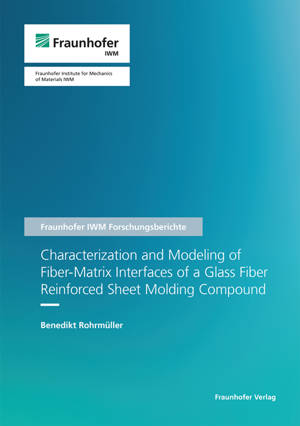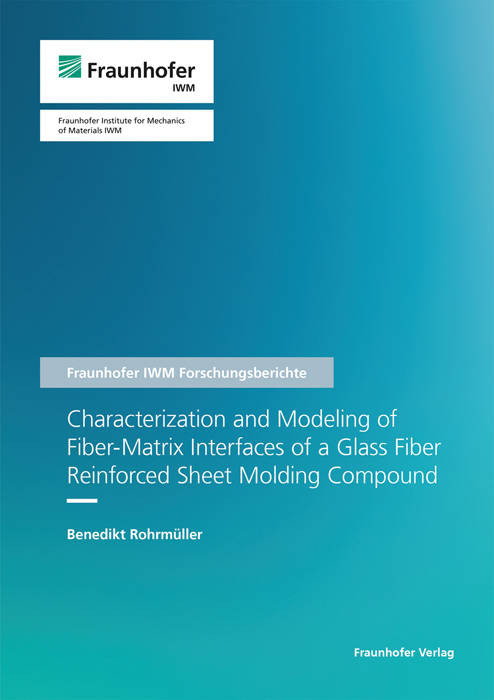
- Afhalen na 1 uur in een winkel met voorraad
- Gratis thuislevering in België vanaf € 30
- Ruim aanbod met 7 miljoen producten
- Afhalen na 1 uur in een winkel met voorraad
- Gratis thuislevering in België vanaf € 30
- Ruim aanbod met 7 miljoen producten
Zoeken
Characterization and Modeling of Fiber-Matrix Interfaces of a Glass Fiber Reinforced Sheet Molding Compound
Benedikt Rohrmüller
€ 85,95
+ 171 punten
Omschrijving
Fiber reinforced polymers are a composite material used in lightweight construction to reduce weight. The material investigated is a glass fiber reinforced sheet molding compound (SMC), consisting of glass fibers arranged in bundles and a thermoset matrix out of unsaturated polyester polyurethane hybrid resin.
This thesis focuses on the characterization of the fiber-matrix interface under mode II (shear) loading and mode I (crack-opening) loading. Therefore, an approach with experiments on the composite material followed by finite element simulations at the microstructural level is chosen. The interface is modeled by a cohesive zone formulation. The interface characterization under mode II loading is done by single-fiber push-out tests. In push-out simulations with thermally induced residual stresses, the effects of neighboring fibers and the influence of the interface normal direction on the test are investigated. In addition, the process of the push-out test is studied in detail in simulations. As a possible interface characterization under mode I loading, the splitting of micropillars with the interface vertically in the middle by a wedge shaped indenter tip is investigated.
This thesis focuses on the characterization of the fiber-matrix interface under mode II (shear) loading and mode I (crack-opening) loading. Therefore, an approach with experiments on the composite material followed by finite element simulations at the microstructural level is chosen. The interface is modeled by a cohesive zone formulation. The interface characterization under mode II loading is done by single-fiber push-out tests. In push-out simulations with thermally induced residual stresses, the effects of neighboring fibers and the influence of the interface normal direction on the test are investigated. In addition, the process of the push-out test is studied in detail in simulations. As a possible interface characterization under mode I loading, the splitting of micropillars with the interface vertically in the middle by a wedge shaped indenter tip is investigated.
Specificaties
Betrokkenen
- Auteur(s):
- Uitgeverij:
Inhoud
- Aantal bladzijden:
- 186
- Taal:
- Engels
- Reeks:
- Reeksnummer:
- nr. 30
Eigenschappen
- Productcode (EAN):
- 9783839619681
- Uitvoering:
- Paperback
- Afmetingen:
- 148 mm x 210 mm

Alleen bij Standaard Boekhandel
+ 171 punten op je klantenkaart van Standaard Boekhandel
Beoordelingen
We publiceren alleen reviews die voldoen aan de voorwaarden voor reviews. Bekijk onze voorwaarden voor reviews.











